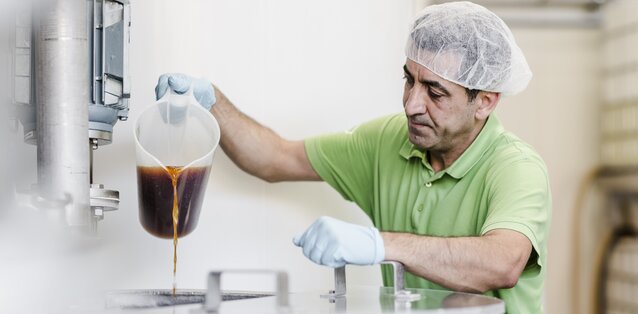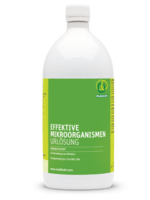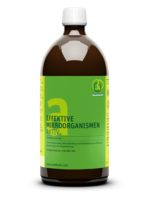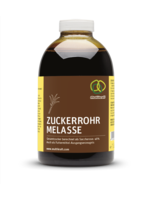

Our basic product: Making it easily with the EM preparation calendar
Effective microorganisms (EM) have a positive effect on the microbial environment of the soil, plants, etc. and rebuild it. Effective Microorganisms Active (EM Active) is the basic product of EM technology and we will now show you how you can easily produce it yourself.
Effective microorganisms (EM) have a positive effect on the microbial environment of the soil, plants, etc. and rebuild it. Effective Microorganisms Active (EM Active) is the basic product of EM technology and we will now show you how you can easily produce it yourself.
What else do you need to be aware of when making EM active?
Fermentation aids can be helpful. These include, among others, a non-metallic heating element and a fermentation bung, which will allow the CO2 produced during fermentation to escape. Good insulation and avoiding thermal bridges to the floor and the surroundings are essential for the successful activation of EM concentrate, which produces EM active. This can be achieved by insulating the outside of the container or by carrying out the fermentation in a warm room (heat chamber). Particularly in the winter, very low temperatures or temperature fluctuations are problems that need to be avoided if the fermentation process is to be successful.
After 10 days, the pH should be between 3.5 and a maximum of 4. The pH can be measured using the measuring strips provided or a calibrated measuring device. After the fermentation process is completed, store the container a cool room with only minor temperature fluctuations.
Fermentation aids can be helpful. These include, among others, a non-metallic heating element and a fermentation bung, which will allow the CO2 produced during fermentation to escape. Good insulation and avoiding thermal bridges to the floor and the surroundings are essential for the successful activation of EM concentrate, which produces EM active. This can be achieved by insulating the outside of the container or by carrying out the fermentation in a warm room (heat chamber). Particularly in the winter, very low temperatures or temperature fluctuations are problems that need to be avoided if the fermentation process is to be successful.
After 10 days, the pH should be between 3.5 and a maximum of 4. The pH can be measured using the measuring strips provided or a calibrated measuring device. After the fermentation process is completed, store the container a cool room with only minor temperature fluctuations.
Why temperature plays a role with Effective Microorganisms
Temperature plays a crucial role if you want to make your own EM fertiliser. Too low a temperature can slow down the growth of the Effective Microorganisms and hinder their activation. This in turn can lead to an ineffective fertiliser. Too high a temperature can damage the microorganisms and impair their effect. Therefore, it is important to check the temperature regularly during production.
Temperature plays a crucial role if you want to make your own EM fertiliser. Too low a temperature can slow down the growth of the Effective Microorganisms and hinder their activation. This in turn can lead to an ineffective fertiliser. Too high a temperature can damage the microorganisms and impair their effect. Therefore, it is important to check the temperature regularly during production.



